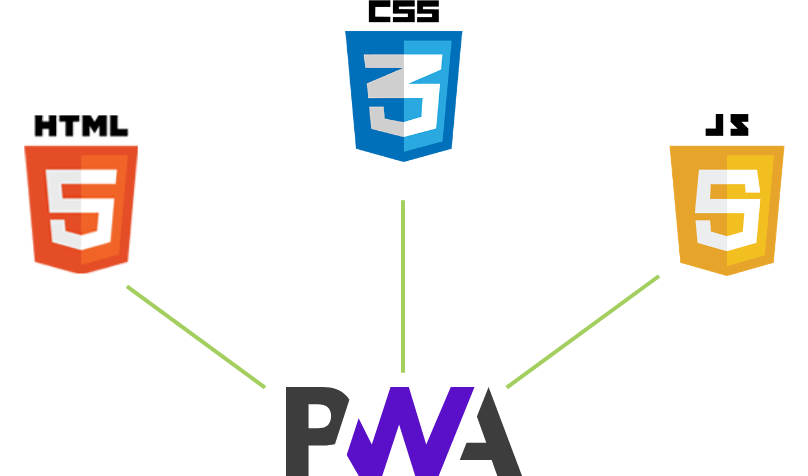Only a few months into the year, and every digital business has found the market changes spurred by a tumultuous 2020 show little signs of fading.
But one constant remains: Your website’s ability to consistently attract and serve your customers is critical. Tapping into the latest advances in digital development can supply your B2B firm with the much-need edge it needs.
Whether used as a means to optimize your website or refine your firm’s services, your ability to stay current will keep you competitive through whatever the future holds.
The Top Web Development Trends
The web development technologies to watch this year may not be necessarily brand new, especially in the Silicon Valley-centered world of the B2B tech industry. But even as these concepts may be familiar, their growing presence and continued evolution stand as a development worth watching.
Not unlike the latest trends in digital design, your ability to explore and deploy development practices depends on your brand, target audience, and business goals. But if your firm is looking to expand the reach of its technical capabilities, these trends will keep you near the head of the pack.
1. Voice-Assisted Searches Are on the Rise and Machine Learning is Improving
![]()
If SEO isn’t already a key focus of your digital marketing, it definitely should be. But even if you’re effectively targeting ways to improve your rankings on Google and Bing, you need to be mindful of the increased possibilities available in voice search as well.
In 2016, Google reported that 20% of its searches on mobile devices were conducted by voice. According to ComScore, that number stood to reach 50% last year amid the ongoing expansion of virtual assistants such as Siri as well as smart speakers like Amazon’s Alexa and Google Home.
As the machine learning within these products evolves to better reflect user habits to generate more targeted search results, voice usage stands to increase even further. Your business needs to be mindful of specific best practices to ensure your rankings remain consistent across whatever search methods your customers apply.
2. Using AI to Power Chatbots is Becoming More Accessible

As machine learning continues to advance, the barriers to entry for deploying a sophisticated chatbot on your site are growing lower. Multiple vendors now offer chat-builder applications that make integrating these bots onto your website close to an out-of-the-box experience.
Across multiple industries, chatbots are being used to expand the reach of marketing and advertising. After some configuration to reflect your users’ most common questions and keywords, an AI-powered chatbot can aid in customer support, allow users to schedule meetings with your sales team, or answer basic questions they may have about your services.
3. Utilizing Progressive Web Applications (PWA) to Reach Users Across Platforms

At one time, if your organization considered developing a standalone application, you had to create it using the native language for each platform. Depending on the device you targeted, you had to build the app to suit the specific operating system whether it was iOS or Android.
Now, with Progressive Web Applications (PWAs), your developers can create an app using common web technologies including HTML, CSS, and JavaScript, which will work on any platform with a standards-compliant browser.
Offering more reliability and efficiency by requiring only a single codebase, PWAs feature the same experience as a native app but with greater flexibility.
4. Advanced Tools Are Expanding the Possibilities for Motion Graphics in Digital Design



In a crowded marketplace, motion graphics provide a powerful way for your website to stand out and make a positive first impression.
While advances such as HTML5 and SVG helped motion graphics grow in prominence as a digital design tool, the frameworks used to create these features have evolved as well. Adobe AfterEffects, Cinema 4D, and Blender are among the tools that are helping motion graphics and visual effects see increased adoption across the B2B tech industry.
5. Streamline Website Management and Production Through Digital Experience Platforms


Offering a combination of a content management system and digital asset management capabilities, Adobe Experience Manager (AEM) has been a market leader as a digital experience platform. However, Drupal 9 hosted on Acquia is closing the gap with Adobe.
Expanding the reach of Drupal as a CMS by offering a way to manage and organize your website’s resources, Acquia is optimized to take advantage of Drupal’s strengths. Plus, the platform incorporates a marketing cloud that allows for user personalization and better customer targeting.
When paired with Acquia, the already powerful, open-source capabilities of Drupal grows that much stronger. If your website needs the all-in-one flexibility of a digital experience platform, you now have more options beyond the Adobe ecosystem.
6. Launch New Site Components Faster With JavaScript Frameworks


For years, developing in JavaScript required line after line of complex, hand-written code. Now, through the power of open source frameworks like Vue and React, your developers can quickly build new user interfaces and incorporate them into your site.
Offering debugging capabilities and a component-based approach to creating new projects, React is the more popular of the two frameworks within the development community. However, Vue’s profile continues to grow as a user interface tool by remaining lightweight while offering extensive documentation and the ability to scale between a component library and a more expansive development framework.
The right approach for your organization will ultimately come down to your team and what your business hopes to achieve with its frontend development. But with either framework, your developers gain the the ability to create features in a way that’s fast, reliable and consistent with your site’s existing components.
7. Mobile-first Development Is Becoming a Requirement to Reach Users

As Google has signaled through its continued shift toward mobile-first indexing, you can no longer afford to consider desktop users the primary audience for your business. Websites that did not offer an equitable experience on mobile platforms are now viewed by the search engine as providing a poor user experience – and with good reason.
Since 2016, internet users worldwide have spent the bulk of their time browsing on mobile devices. To ensure you accommodate the needs of a growing audience for your organization, you should also view your development from the perspective of serving mobile users first.
From the beginning, your developers should follow principles of responsive web design, which allows your site to suit any screen size. Plus, by primarily focusing on mobile users with your design efforts, your team will develop the project to create the best user experience under those restrictions. Then, as your project expands to platforms with more expansive capabilities, your team can add new features in a process called “progressive enhancement.”






